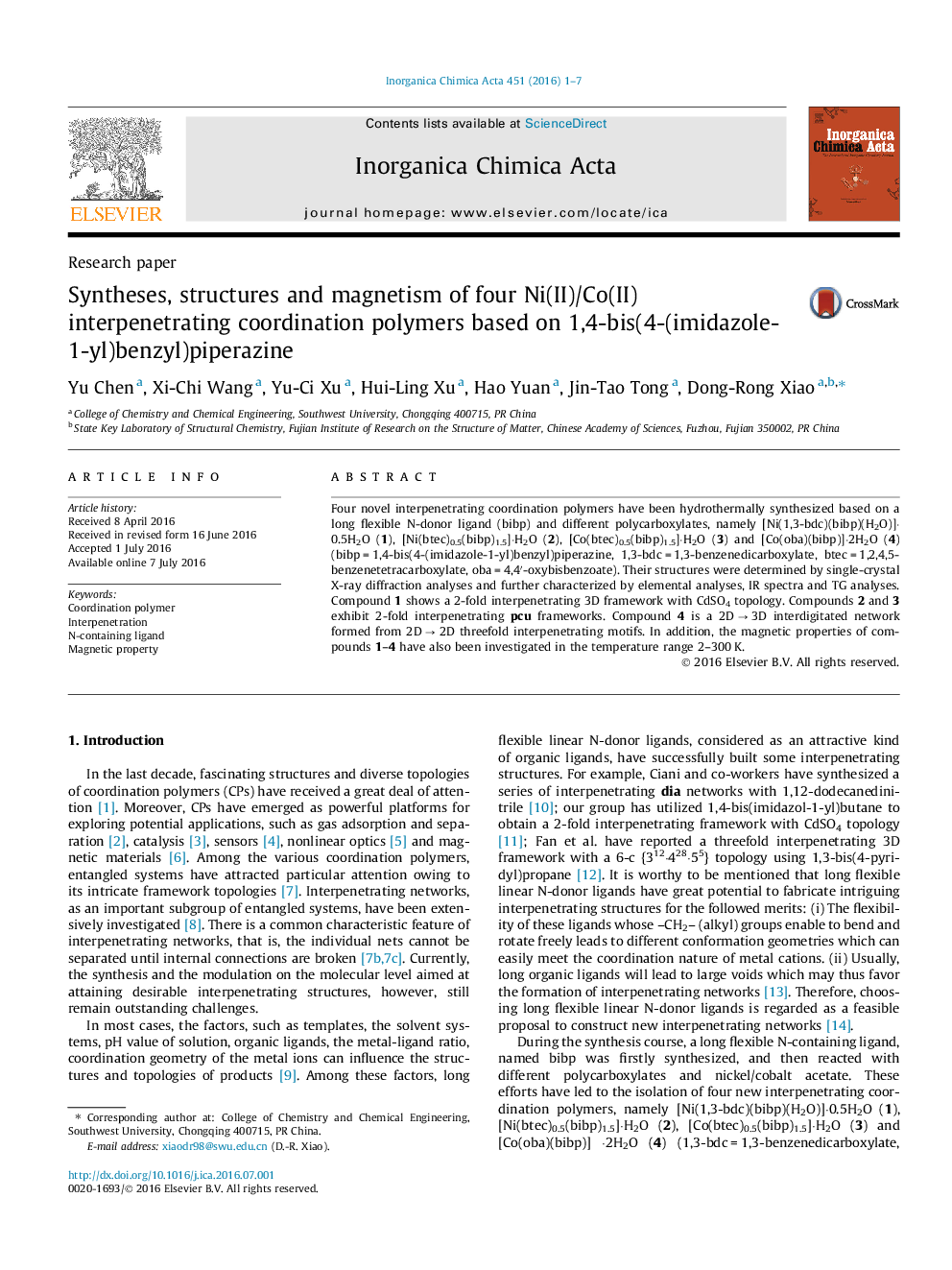| Article ID | Journal | Published Year | Pages | File Type |
|---|---|---|---|---|
| 1311920 | Inorganica Chimica Acta | 2016 | 7 Pages |
•Compounds 1–4 display different interpenetrating networks based on the bibp ligand.•Compound 1 shows a 2-fold interpenetrating 3D framework with CdSO4 topology.•Compounds 2 and 3 exhibit 2-fold interpenetrating pcu frameworks.•Compound 4 is a 2D → 3D interdigitated network formed from 2D → 2D threefold interpenetrating motifs.
Four novel interpenetrating coordination polymers have been hydrothermally synthesized based on a long flexible N-donor ligand (bibp) and different polycarboxylates, namely [Ni(1,3-bdc)(bibp)(H2O)]·0.5H2O (1), [Ni(btec)0.5(bibp)1.5]·H2O (2), [Co(btec)0.5(bibp)1.5]·H2O (3) and [Co(oba)(bibp)]·2H2O (4) (bibp = 1,4-bis(4-(imidazole-1-yl)benzyl)piperazine, 1,3-bdc = 1,3-benzenedicarboxylate, btec = 1,2,4,5-benzenetetracarboxylate, oba = 4,4′-oxybisbenzoate). Their structures were determined by single-crystal X-ray diffraction analyses and further characterized by elemental analyses, IR spectra and TG analyses. Compound 1 shows a 2-fold interpenetrating 3D framework with CdSO4 topology. Compounds 2 and 3 exhibit 2-fold interpenetrating pcu frameworks. Compound 4 is a 2D → 3D interdigitated network formed from 2D → 2D threefold interpenetrating motifs. In addition, the magnetic properties of compounds 1–4 have also been investigated in the temperature range 2–300 K.
Graphical abstractFour novel coordination polymers have been synthesized by self-assembly of nickel/cobalt acetates with a long flexible linear N-donor ligand (bibp, 1,4-bis(4-(imidazole-1-yl)benzyl)piperazine) and varied polycarboxylates, which present different interpenetrating networks.Figure optionsDownload full-size imageDownload as PowerPoint slide
